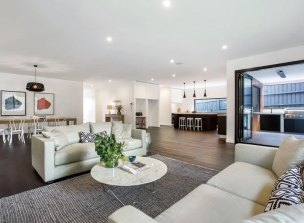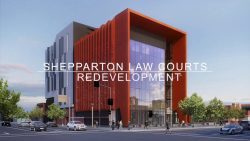How Architectural Virtual Reality is Shaping the Cities of Tomorrow?
In an ever-evolving world, the future of cities lies at the intersection of technology, design, and human experience. As we move forward into the 21st century, architects and urban planners are harnessing the power of Architectural Virtual Reality (ARVR) to redefine the way we build and inhabit urban spaces. This revolutionary technology is not just shaping the cities of tomorrow; it is reimagining them. In this article, we will delve into the transformative impact of ARVR on architecture and urban planning, exploring the ways it is reshaping the cities of the future.
The Rise of Architectural Virtual Reality
Architectural Virtual Reality (ARVR), often referred to simply as VR in the architectural context, is a technology that allows architects and designers to create immersive, three-dimensional virtual environments. These environments can be explored using VR headsets, enabling users to walk through and interact with the spaces as if they were physically present. This technology has gained significant traction in recent years, and its applications in architecture are nothing short of revolutionary.
Enhancing Design and Visualization
Traditionally, architects and designers relied on two-dimensional drawings, blueprints, and physical models to communicate their ideas. While these methods are valuable, they lack the immersive quality necessary for stakeholders to fully grasp a project’s potential. ARVR bridges this gap by offering a realistic and immersive way to visualize architectural designs.
Immersive Design Review: ARVR allows architects and clients to step into a virtual representation of a building before it is constructed. This immersive experience provides a deeper understanding of the design, enabling stakeholders to make more informed decisions.
Real-Time Iteration: Changes to designs can be made in real time within the virtual environment. This dynamic process fosters collaboration and innovation, resulting in more refined and efficient design solutions.
Urban Planning and Simulation
Beyond individual buildings, virtual reality architecture Melbourne plays a crucial role in urban planning and development. It enables planners and policymakers to simulate entire cityscapes, test various scenarios, and make data-driven decisions.
Traffic Flow Analysis: By simulating traffic patterns and pedestrian movements within a virtual city, urban planners can optimize road layouts, public transportation systems, and urban infrastructure.
Sustainability Assessment: ARVR can model the environmental impact of urban development, helping cities achieve sustainability goals by analyzing energy consumption, carbon emissions, and green spaces.
Community Engagement and Stakeholder Involvement
Involving the community in the planning and design of urban spaces is essential for creating cities that reflect the needs and desires of their inhabitants. ARVR facilitates this engagement in several ways:
Virtual Public Meetings: Instead of traditional town hall meetings, ARVR allows residents to explore proposed projects from the comfort of their homes. They can provide feedback and suggestions, fostering a sense of ownership in the planning process.
Accessibility: Virtual reality makes it possible for people with physical disabilities or mobility issues to participate in planning discussions without the constraints of physical attendance.
Transforming the Construction Process
ARVR doesn’t stop at the design phase; it also transforms the way buildings are constructed. Here’s how:
Improved Communication
In the construction industry, effective communication is paramount to project success. ARVR enhances communication between architects, engineers, contractors, and other stakeholders.
3D Blueprints: Traditional blueprints are often difficult to interpret for non-experts. With ARVR, all stakeholders can view a 3D model of the building, eliminating misunderstandings and errors.
Virtual Site Walks: Contractors and builders can take virtual site walks before construction begins, identifying potential issues and improving project coordination.
Safety Training
Construction sites can be hazardous environments, and safety is a top priority. ARVR offers a safe and immersive way to train construction workers on safety protocols and procedures.
Virtual Safety Drills: Workers can practice emergency procedures in a virtual environment, preparing them for real-life situations without risk.
Equipment Training: ARVR simulations allow workers to familiarize themselves with heavy machinery and equipment, reducing the risk of accidents.
On-Site Assistance
Once construction is underway, ARVR will continue to provide value by offering on-site assistance and problem-solving.
Remote Expert Consultation: Experts can remotely guide on-site workers using ARVR, providing real-time support and reducing downtime.
As-Built vs. Design Comparison: ARVR can be used to compare the as-built structure to the original design, ensuring that construction stays on track.
Creating Smart and Sustainable Cities
As our world faces increasing urbanization and environmental challenges, the concept of smart and sustainable cities has gained prominence. ARVR is a key enabler in the creation of such cities:
Energy Efficiency
Virtual Energy Audits: ARVR can simulate a building’s energy consumption and suggest improvements to enhance efficiency. It is invaluable for achieving sustainability goals.
Renewable Energy Integration: Architects and planners can use ARVR to explore the integration of renewable energy sources like solar panels into urban designs.
Smart Infrastructure
IoT Integration: ARVR can visualize the implementation of Internet of Things (IoT) devices, such as smart streetlights, waste management
systems, and traffic sensors, leading to more efficient city management.
Data-Driven Decision Making: The data generated by IoT devices can be visualized in ARVR, empowering city officials to make informed decisions about resource allocation and urban planning.
Disaster Preparedness
Emergency Response Simulation: ARVR allows cities to simulate disaster scenarios, aiding emergency response planning and training.
Resilient Design: Architects can use ARVR to test and implement resilient design strategies that mitigate the impact of natural disasters.
Challenges and Considerations
While ARVR holds tremendous promise for shaping the cities of tomorrow, it also presents some challenges and considerations:
Cost: The initial investment in ARVR technology can be substantial. However, the long-term benefits in terms of improved designs, reduced construction errors, and enhanced public engagement often justify the cost.
Skill Acquisition: Architects, planners, and construction professionals need to acquire new skills to effectively use ARVR tools. It requires ongoing training and education.
Data Privacy: Handling vast amounts of data in ARVR applications raises concerns about data privacy and security, particularly when it involves sensitive urban planning and infrastructure data.
Digital Divide: Ensuring equitable access to ARVR technology is crucial to prevent a digital divide where some communities benefit more than others.
The Future is Virtual
Architectural Virtual Reality is revolutionizing how we design, construct, and inhabit cities. It empowers architects and urban planners to create more sustainable, efficient, and user-centric urban environments. As technology continues to evolve, we can expect even greater advancements in the way we shape the cities of tomorrow.
The cities of the future will be smart, sustainable, and deeply connected to the needs and aspirations of their inhabitants. Architectural Virtual Reality is not just a tool but a catalyst for transformation. As we harness its potential, we embark on a journey toward more inclusive, resilient, and harmonious urban spaces. The future is virtual, and the possibilities are boundless.




